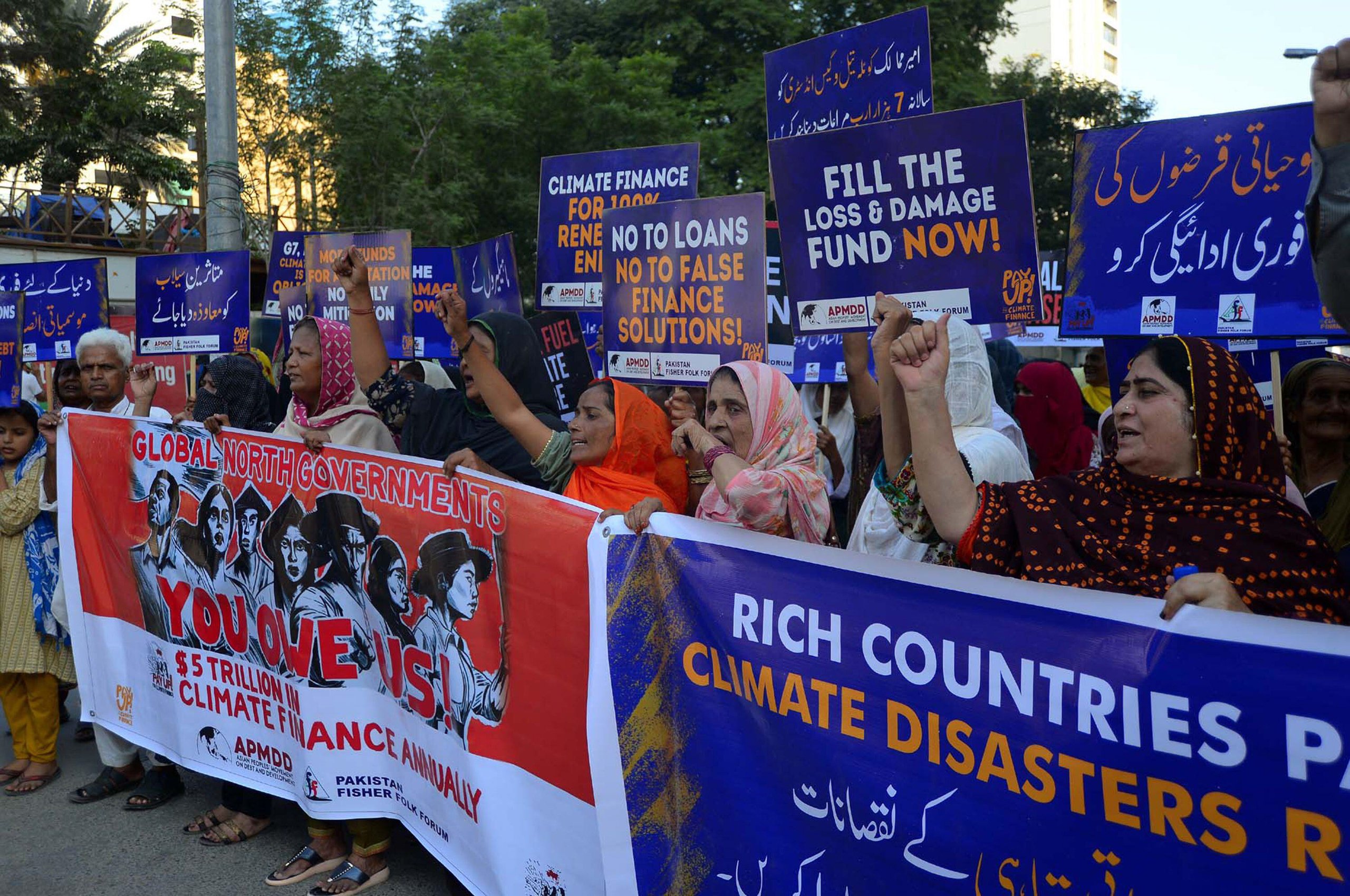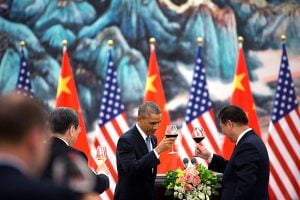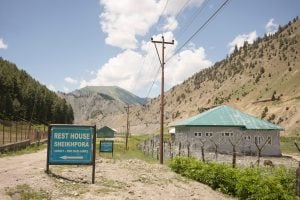The announcement of the Loss and Damage Fund (LDF) at the 2022 UN Climate Change Conference (COP27) in Egypt was a significant diplomatic victory for Pakistan, as was its formalisation at COP28 last year in the United Arab Emirates. In the last two years, Loss and Damage (L&D) – referring to irreversible costs of climate change beyond ecosystems’ adaptive capacities – has emerged as a central focus of L&D finance, even if it has yet to become operational. Regrettably, the allocated funds remain woefully inadequate, amounting to approximately USD 700 million against an estimated need of USD 290-580 billion by 2030.
To fully leverage the potential of L&D, countries like Pakistan have to understand the two foundational mechanisms which preceded the LDF: the Warsaw International Mechanism (WIM) and the Santiago Network. Together, these three mechanisms form the core architecture for enabling developing countries to respond to Loss and Damage. WIM and the Santiago Network are not financing entities. WIM is a coordinating platform that provides technical support and guidance on approaches to address L&D. The Santiago Network, on the other hand, is a L&D capacity-building initiative. Their interconnectedness and respective mandates will be pivotal in the discussions at COP29 in Baku, Azerbaijan.
WIM, established in 2013, offers an overarching framework from which both the Santiago Network and the Loss and Damage Fund were developed. Mandated as the conceptual umbrella, it has spearheaded technical studies across five key L&D areas: i) slow-onset climate events, ii) non-economic losses, iii) comprehensive risk management, iv) displacement and v) action and support. These studies have fostered the development of several methodologies and guidelines that enable the testing and piloting of community-led projects in diverse ecosystems.
These studies have enhanced the technical capacities of participating countries, as they help in distinguishing L&D from adaptation, demonstrating how the latest climate science can inform policymaking relevant to averting, minimising and addressing L&D. This body of literature has also sparked a process of distinguishing L&D from adaptation in order to facilitate a distinct financing stream under the UN Framework Convention on Climate Change.
Regrettably, Pakistan’s weak technical capacity and lack of coordination between the Ministry of Foreign Affairs, which represents Pakistan in the WIM Executive Committee, and the Ministry of Climate Change (MOCC), which represents Pakistan in the Santiago Network, have hindered its effective engagement. As a result, our climate and other sectoral policies, including the Nationally Determined Contributions and National Adaptation Plan, are not informed by these five crucial areas of L&D action. Pakistan’s absence from technical groups has been a missed opportunity in augmenting national capacity.
Established under the WIM in 2019, the Santiago Network is a vital initiative aimed at providing technical assistance to particularly vulnerable countries like Pakistan. Its mandate is to facilitate technical assistance, connecting nations with relevant organisations, networks and experts. At present, it is still trying to scale up its activities since its operationalisation in 2022.
Despite its limitations, including limited staffing and financing, the network remains critical in supporting vulnerable nations in their efforts to cope with adverse climate effects through targeted technical assistance, knowledge sharing and capacity-building. The network’s efforts will assume a greater importance in helping countries develop the capacity to effectively access and utilise financial support from the LDF. This will extend the network’s role beyond mere technical assistance. The review of the WIM has been a contentious issue since COP24, with ongoing debates over COP/CMA governance. This lack of agreement has stalled meaningful progress on WIM’s long-term vision.
Last year’s climate summit, COP28, in Dubai, marked a critical juncture for these climate finance mechanisms. For the Santiago Network, the discussions also touched on how to integrate it more closely with the LDF to ensure seamless support from technical assistance to financial support. Pakistan successfully secured a seat on the governance structures of both the LDF and the Santiago Network, represented by this author at the LDF and by the climate ministry secretary at the Santiago Network. Frequent posting and transfers of officers at MOCC has further hampered Pakistan’s participation in the Santiago Network.
While the WIM serves as the overarching framework, the Santiago Network focuses on technical assistance, and the LDF represents the financial backbone required to implement robust climate action. This tripartite structure reflects a holistic approach to tackling climate vulnerabilities. The existence of these three mechanisms encourages policy coherence at national and international levels, enabling countries to align their climate strategies and leverage support across all three areas. As these mechanisms evolve and mature, they have the potential to bridge the gap between those most affected by climate change and the resources they desperately need.
At COP29 in Baku, the interplay between these three mechanisms is expected to resurface. Key discussions will likely involve establishing clear criteria for accessing support and ensuring transparency in decision-making processes. There will likely be a strong push for greater integration among the three mechanisms, focusing on strengthening the WIM’s capacity to provide strategic guidance to the other two mechanisms, ensuring coherence and maximising their collective impact. This could involve creating streamlined processes for countries to access technical support through the Santiago Network in tandem with financial aid from the LDF. Developing robust methodologies for measuring the impact of interventions, in such areas as non-economic loss and Damage (NELD), supported by these mechanisms will be vital for demonstrating their value and securing ongoing support.
Additionally, expanding the network of partners involved in the Santiago Network and diversifying funding sources for the LDF are likely to be on the agenda. There may be increased attention on how these mechanisms can better address non-economic losses and damages, such as the loss of culture and biodiversity. Another key aspect is ensuring that LD finance is integrated into the New Collective Quantified Goals (NCQGs). However, developed countries have so far resisted including any specific L&D financing targets within the NCQG framework.
As climate impacts intensify, the global community’s ability to operationalise and harmonise these mechanisms will be critical. The discussions at COP29 in Baku will play a pivotal role in shaping the future of climate finance for L&D. The effectiveness of these mechanisms in delivering timely, efficient and comprehensive support to those on the frontlines of climate change will serve as a litmus test for global solidarity.









